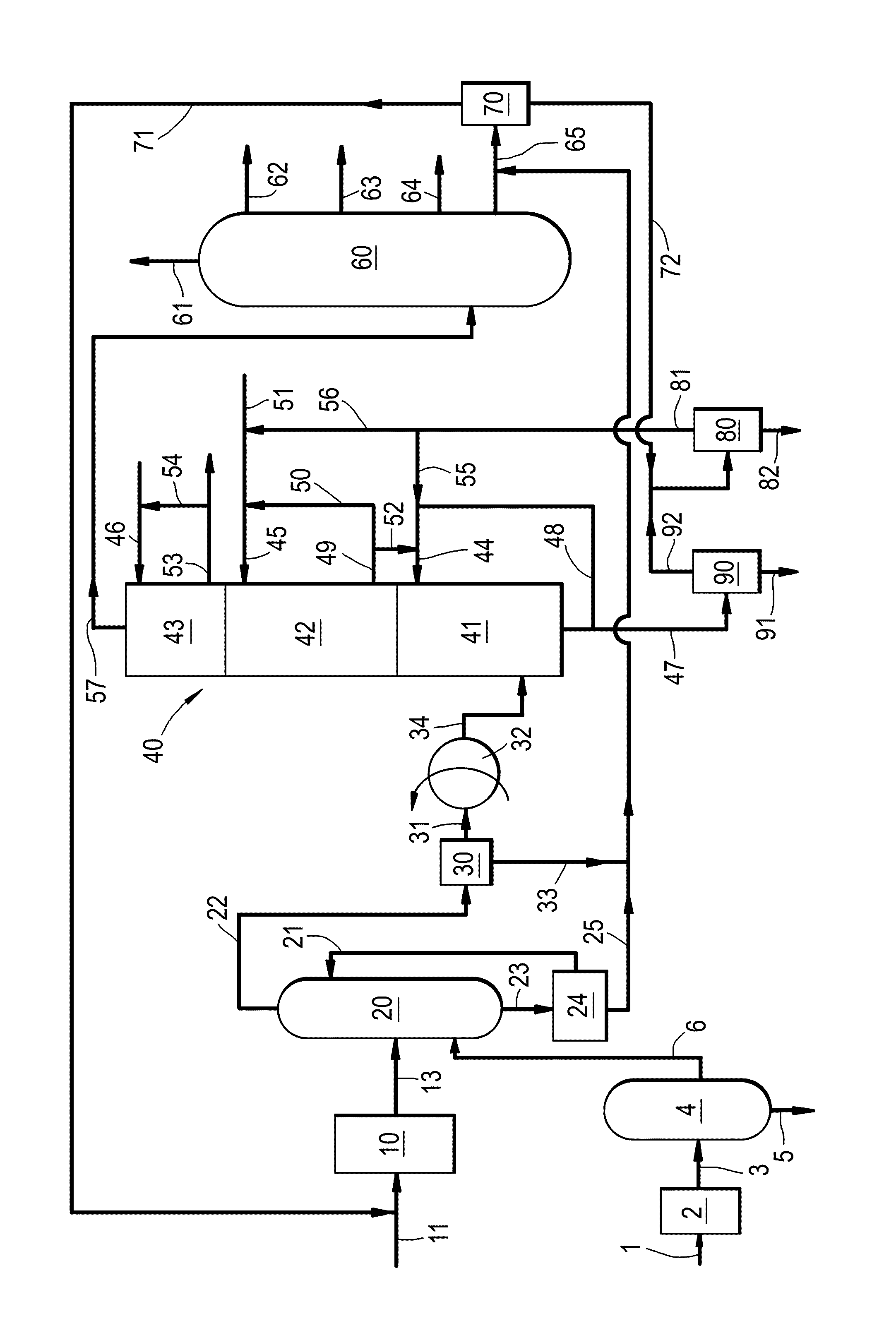Process for the preparation of an olefinic product comprising ethylene and/or propylene
a technology of olefinic products and propylene, which is applied in the direction of hydrocarbon preparation catalysts, thermal non-catalytic cracking, organic chemistry, etc., can solve the problems of unreacted sulphite and bisulphate addition compounds being treated in the effluent treatment system of the oto process, unreacted sulphite and bisulphate addition compounds being treated in the effluent treatment system, and avoiding unplanned fouling of equipment internal
- Summary
- Abstract
- Description
- Claims
- Application Information
AI Technical Summary
Benefits of technology
Problems solved by technology
Method used
Image
Examples
Embodiment Construction
[0022]In the process according to the invention, a paraffinic feedstock is steam cracked under cracking conditions in a cracking zone to obtain a cracker effluent comprising olefins (step a)). An oxygenate is converted into lower olefins by contacting the oxygenate with a molecular sieve-comprising catalyst at a temperature in the range of from 350 to 1000° C. to obtain an oxygenate conversion effluent comprising olefins (step b)).
[0023]In step c), both the cracker effluent and the oxygenate conversion effluent are subjected to a water removal step followed by a compression step. The cracker effluent and the oxygenate conversion effluent are combined prior to the water removal step or between the water removal step and the compression step. Thus, a combined compressed water-depleted gaseous stream that comprises olefins, carbon dioxide and carbonyl compounds including C2+ aldehyde and / or ketone is obtained in step c).
[0024]In step d), carbon dioxide and other acids are separated fro...
PUM
| Property | Measurement | Unit |
|---|---|---|
| temperature | aaaaa | aaaaa |
| temperature | aaaaa | aaaaa |
| temperature | aaaaa | aaaaa |
Abstract
Description
Claims
Application Information
 Login to View More
Login to View More - R&D Engineer
- R&D Manager
- IP Professional
- Industry Leading Data Capabilities
- Powerful AI technology
- Patent DNA Extraction
Browse by: Latest US Patents, China's latest patents, Technical Efficacy Thesaurus, Application Domain, Technology Topic, Popular Technical Reports.
© 2024 PatSnap. All rights reserved.Legal|Privacy policy|Modern Slavery Act Transparency Statement|Sitemap|About US| Contact US: help@patsnap.com









